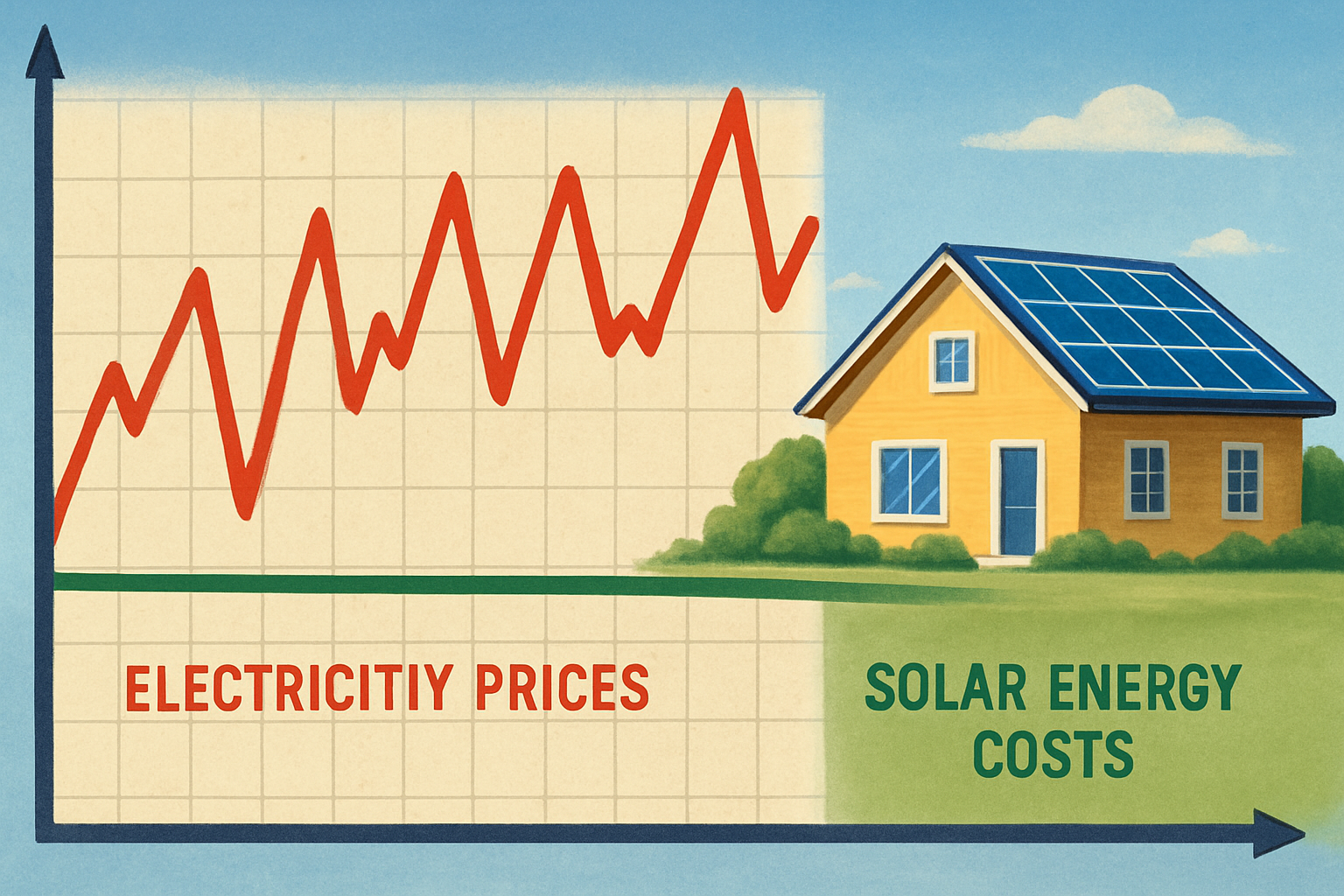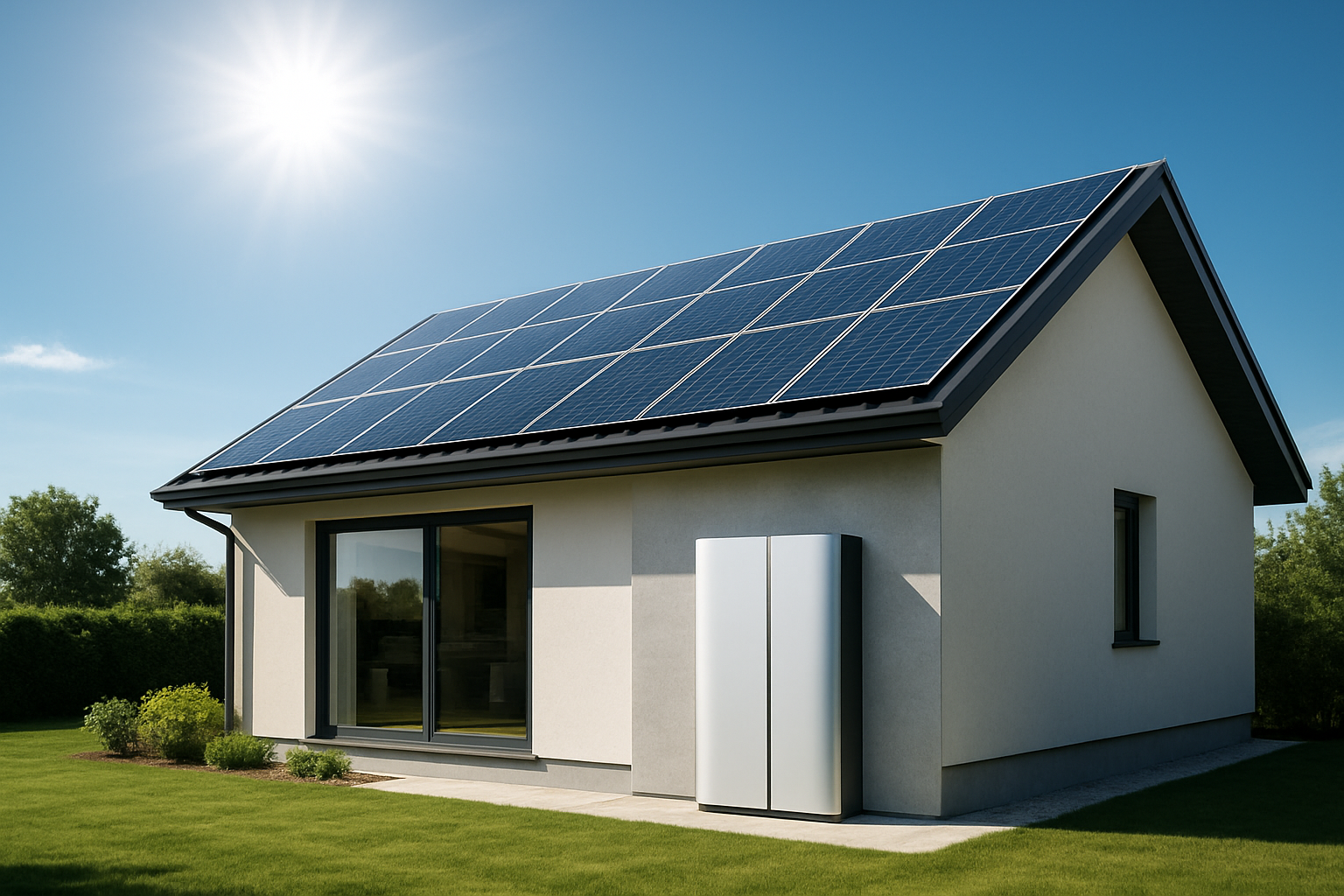Imagine a future where your electricity bills are predictable, largely immune to the rising rates that affect so many. This vision is not a distant dream; it is a tangible reality when you combine solar energy with advanced battery storage. This powerful duo offers a strategic path to secure substantial savings on your electricity costs for two decades, providing true energy independence and financial stability.
The Foundation of Savings: Solar Energy
Solar energy has transformed how homes and businesses power their lives. By converting sunlight into electricity, solar panels create a direct, clean energy source for your property. This immediate impact on your daily energy consumption lays the groundwork for long-term financial benefits.
Harnessing Sunlight for Immediate Impact
Installing solar panels allows you to generate your own electricity, directly reducing the amount you purchase from the utility grid. This self-generation capability translates into immediate, tangible savings on your monthly electricity statement. The more energy your system produces and you consume directly, the less you pay your utility company.
Hedging Against Rising Electricity Rates
One of the most compelling advantages of solar energy is its ability to act as a hedge against unpredictable electricity rate hikes. Traditional utility rates can fluctuate due to various factors, including fuel costs, infrastructure investments, and regulatory changes. By generating your own power, you fix a significant portion of your energy costs, insulating yourself from these external pressures. The International Energy Agency (IEA) noted that while the levelized cost of electricity (LCOE) for solar PV and wind increased in 2022, they remained a more attractive proposition than fossil fuel power for new generation in most markets. This suggests that even with some cost fluctuations, the long-term economic case for solar remains strong, offering a stable alternative to volatile grid prices.
Amplifying Savings with Energy Storage

While solar panels provide power during daylight hours, integrating an energy storage system (ESS) unlocks a new level of energy management and savings. These systems, often built with high-performance, safe, and reliable lithium iron phosphate (LiFePO4) batteries, store excess solar energy for later use. This capability is crucial for maximizing your savings and achieving greater energy autonomy.
Maximizing Self-Consumption and Minimizing Grid Dependence
With an ESS, the solar energy your panels generate during the day, but you do not immediately use, is stored in batteries instead of being sent back to the grid for minimal credit. This stored energy becomes available for your use during the evening or on cloudy days, significantly increasing your self-consumption rate. By relying less on grid electricity, especially during peak demand times, you directly reduce your utility bill and enhance your energy independence.
Navigating Time-of-Use Rates and Grid Outages
Many utility providers implement time-of-use (TOU) rates, where electricity costs vary throughout the day, often peaking in the late afternoon and evening. An ESS allows you to discharge stored solar energy during these expensive peak hours, avoiding high utility charges. This strategic energy management leads to substantial savings. Furthermore, in the event of a grid outage, a well-designed home energy storage system provides backup power, keeping essential appliances running and offering peace of mind. This resilience adds invaluable practical utility beyond monetary savings.
The 20-Year Horizon: Predicting Your Energy Future
Committing to solar and storage is a long-term investment, one designed to yield consistent returns over two decades or more. Understanding the economic trends and policy landscape helps illustrate the predictability and stability you gain.
Analyzing Cost Trends and Policy Support
The cost of solar technology has seen significant declines over the past decade, making it increasingly accessible. While the IEA noted that solar PV module prices increased by about 20% in early 2022 compared to the previous year due to material and labor market tightness, prices began to decline again in early 2023 as input costs eased and manufacturing capacity expanded. This indicates a trend towards more favorable pricing. Policy support, such as tax credits for solar PV and battery storage, further enhances the financial viability of these systems. For example, the U.S. Inflation Reduction Act includes tax credits for both solar PV and storage, alongside support for local manufacturing and grid upgrades. Similarly, the European Union has set an ambitious target to raise its renewable energy share to a minimum of 42.5% of final energy consumption by 2030, up from 32%, signaling strong ongoing support for clean energy deployment.
Consider the long-term financial stability offered by a PACE Lease, which has enabled project developers to internalize the benefits of solar installation tax incentives. This allows them to pass on savings to customers as a fixed, low-cost annual payment for energy services over a 20-year period. This mechanism demonstrates how long-term financial structures can lock in energy cost reductions, a principle that extends to residential ownership with predictable payback periods and ongoing savings.
The Role of Advanced Battery Technology
The longevity and performance of your energy storage system are critical for realizing 20-year savings. Modern LiFePO4 batteries offer a superior combination of high performance, safety, and reliability. These batteries boast a longer cycle life and better thermal stability compared to older battery chemistries, making them ideal for the demanding cycles of daily solar charging and discharging. The continuous innovation in battery technology ensures that your investment in an ESS provides dependable service and consistent savings for many years.
Practical Steps to Secure Your Savings
Embarking on your solar and storage journey involves a few key considerations to ensure you maximize your long-term savings.
Assessing Your Needs and System Sizing
The first step involves understanding your household's unique energy consumption patterns. An energy audit or review of past electricity bills can provide valuable insights. Based on this data, professionals can design a solar array sized to meet your specific energy demands and an ESS with adequate capacity to store surplus energy. Proper sizing ensures you generate enough power to significantly offset your grid reliance and have sufficient backup for critical loads.
Understanding Installation and Maintenance for Longevity
Choosing experienced installers for your solar panels and battery storage system is crucial for optimal performance and system longevity. Quality installation ensures that your system operates efficiently and safely for its entire lifespan. While solar and storage systems require minimal maintenance, periodic checks and cleaning can help maintain peak efficiency. Investing in reliable components, such as high-quality solar inverters that efficiently convert direct current (DC) from panels to alternating current (AC) for your home, also contributes to the system's overall durability and consistent savings over two decades.
Your Path to Lasting Energy Independence
The combination of solar energy and battery storage offers a compelling strategy to lock in significant electricity bill savings for two decades. You gain control over your energy costs, protect yourself from future rate increases, and contribute to a sustainable energy future. By embracing these robust and scalable energy solutions, you empower your home with predictable electricity expenses and enhanced resilience, securing lasting energy independence for your family.





Leave a comment
All comments are moderated before being published.
This site is protected by hCaptcha and the hCaptcha Privacy Policy and Terms of Service apply.